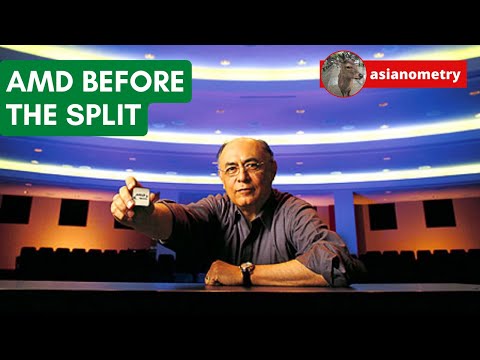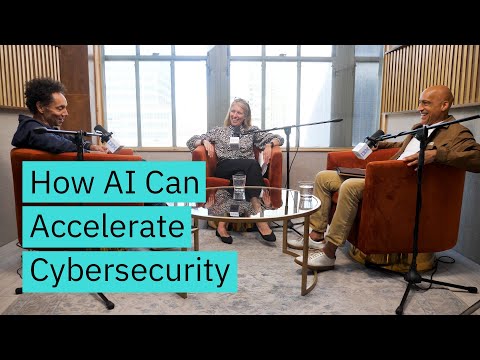AMD: The Incredible Adventure Continues

at the end of our last video AMD and Intel had signed a global settlement in 1995 that put to rest there are many outstanding legal battles AMD celebrated with a satirical movie poster depicting co-founder Jerry Sanders as Indiana Jones the title proclaiming The Incredible Adventure Continues but while the legal Court battle might be over for now the market clashes between the two Fairchild descendants plowed on in this third video of a Trilogy we continue our tale of AMD struggles to compete against an Intel at the very peak of its powers but first let me talk about the Asian Armature patreon Early Access members get to see new videos first as well as selected references for those videos Early Access helps a lot and I appreciate every pledge thanks and on with the show in March 1993 Intel released the Pentium Intel introduced the Pentium as the successor to their 386 and 486 CPUs they chose to call it the Pentium rather than the 586 in part because the old number names cannot be trademarked and also in part because the Pentium offered a brand new micro architecture capable of handling larger memory transfers with 3.1 million transistors fabbed using a 0.8 Micron process the chip performed two to five times better than an Intel 486 chip of the same frequency so by the time of the global settlement it had been already in the market for over a year facing this time lag and Intel's iconic Intel Inside marketing promotions AMD needed a hit product of its own to compete AMD needed to fire back with something groundbreaking back in 1987 the company produced a risk microprocessor called the am 29000 it sold well and AMD built on top of that to produce the K5 amd's first entirely in-house design chip the K in K5 stands for Kryptonite which hinted at amd's ambition to take down Intel Superman and it was indeed an ambitious chip adopting many of the pentium's Innovations at a more aggressive level producing a new design was way harder than reverse engineering and Intel chip in order to run the dominant Windows OS the K5 had to meet certain standards but those chip standards which have both physical and software aspects were designed by Intel who obviously was not helping nevertheless on the surface the K5 looked promising at the 1994 microprocessor Forum AMD presented simulation showing that the K5 ran 30 faster than the Pentium and 250 times faster than a 486 that's great now to get it into people's hands from the very beginning amd's people knew that their biggest challenge was in production by the mid-1990s Leading Edge semiconductor Fabs has started to get extremely expensive AMD wanted to Fab their new K5 chip using a 350 nanometer process in its new 1.3 billion dollar Fab 25 in southeast Austin 1.3 billion dollars is a lot of money for a company that only made 2.46 billion
in sales in its 1995 fiscal year AMD struggles to raise the funding necessary to build and operate these Fabs would be a constant thorn in its side unsurprisingly AMD struggled to produce the new chip the original release date was in mid-1995 but Fab 25 didn't finally ramp up until March 1996 a year late so the first K5 chips had to be made using an older 500 nanometer Fab process this made them run at slower clock speeds and at hotter temperatures than anticipated and then the new billion dollar Fab 25 sat idle as Engineers worked on a plethora of uncaught bugs computer makers like compact have put their faith on AMD to deliver as a counterweight to Intel the k5's failure caused them to buy pentiums or cyrix's 6x86 amd's microprocessor sales fell 60 percent in 1996. it had to lean on its other businesses its flash memory and mock line of complex programmable logic devices which are kind of like fpgas to find growth Jerry Sanders a crow at the 1996 annual shareholder meeting saying by now it is well known that we underestimated the enormity of the challenges associated with bringing this new product to the market with no apologies for setting ambitious goals and no excuses for our failure to attain them I must concede that in hindsight our Target turned out to be a bridge too far the K5 didn't pan out as AMD hoped it would the company had spent all of its efforts in getting K-5 back on track so much so that they did not put much time into the Next Generation k6 luckily there was a solution in October 1995 AMD paid 850 million dollars to acquire a small fabulous company called NextGen next gen had debuted a very fine x86 microprocessor design the nx686 at the microprocessor Forum but did not have a Fab they went to IBM Samsung and Texas Instruments for Foundry services but no dice not sure why they didn't go to tsmc they read about amd's struggles in the newspaper that the Austin Fabs were sitting idle and called to propose a merger AMD accepted and essentially adopted next-gen system architecture for their own to make the new k-6 microprocessor the first version launched on schedule ahead of Intel's Pentium 2 launch it was a home run the k6 microprocessor and its enhanced sibling the k62 offered a compelling price performance ratio against Intel's Pentium 2. they were an especially great fit for cheaper computers Less open to Intel's premium pricing in August 1998 AMD proudly announced that k62 powered PCS captured 31 percent of the PC retail Market in the sub one thousand dollar PC market they had 54 market share their highest to date Intel correctly recognized the Strategic problem in allowing AMD to have free reign of this fast growing segment so in April 1998 they released a low end line of chips Celeron these 300 megahertz chips were based on the Pentium 2 design but did not have an L2 cache which meant that if the processor needed some data they had to go to the slower main memory rather than the faster cache memory this significantly compromised performance and they did not sell well so then in August 1998 Intel introduced a faster set of Celeron chips running at 366 and 433 megahertz which sold much better for the majority of the decade Intel had little serious competition performance wise in desktop microprocessors by the time someone had caught up to one of their chips intel was already moving on to the next so everyone was at least one generation behind this finally changed in August 1999 when AMD released the 22 million transistor athon originally named the K7 AMD renamed it to the Athlon to avoid it being linked to the cheap k6 focus groups like the name Athlon short for decathlon the most and apparently no deeper meaning than that for the first time amd's chips can match intels in certain performance metrics the first Athlon could go up to 650 megahertz compared to the Pentium 3s 600. but the athon chips also cost almost as much as intels about 600 dollars per chip a big change from previous years Jerry Sanders said at the time this is it there is no tie it's win or lose in 1998 AMD struck a partnership with Motorola semiconductors trading their own memory technology for the use of the newly introduced copper interconnect technology I covered copper interconnect technology here in the previous video the first K7 to 1999 used the older aluminum interconnects but in 2000 they started shipping copper interconnect chips codename Thunderbird fabbed out of their new 1.9 billion dollar Fab 30 in Dresden Intel of course was not to be denied in 2000 they released their Pentium 4 which took the crown back from Athlon so a year later in 2001 AMD then released her athon XP Chip And So It Goes in 2000 Sanders recruited Hector Ruiz as AMD CEO Ruiz was born in 1945 in a small town in the northern part of Mexico he went to school in the American Town of Eagle Pass Texas just across the border after earning a PhD at Rice University he joined Texas Instruments and then Motorola his first job was to go around the world fixing yields at semiconductor Fabs in Scotland and Arizona over 22 years he climbed up to become president of Motorola semiconductors overseeing a large restructuring effort in building Partnerships with other large players in the industry Motorola semiconductors was later spun off as freescale the private Equity Group Blackstone then bought them for a staggering 17.6 billion dollars and then merged them with nxp semiconductors after 29 years Jerry Sanders was looking to retire and the board urged him to pick a successor he liked Ruiz because of his strong operations experience as well as the fact that they both had poor backgrounds so in 1999 he took Ruiz out to a steakhouse dinner in Austin ostensibly to discuss their company's ongoing Alliance and while casually cutting into a steak said what you need to do is you need to get a real job come join me and I promise you that in a year or two you will be CEO of the company going to AMD might have seemed like a step down they only made about 2.5 billion dollars
in Revenue in comparison to Motorola's nearly 8 billion but Ruiz was attracted to the notion of transforming the scrappy company after his introduction in January 2000 rui served as amdc-00 for two more years before finally taking the top job is a critical very trying time for AMD Intel's product strategy was the browbeat its competitors with Leading Edge Products in the industry the buyers have a lot of power especially large OEM buyers like Dell or HP who use CPUs for their PCS and server computers these make up the bulk of sales in the CPU industry whenever they bring in a new more powerful CPU they also cut the prices of all the older chips in the product line a single CPU in the 1990s might experience three price decreases per year because they have the highest performing chip Intel can reap the highest profits those profits can be reinvested into their products and Manufacturing allowing them to push the Leading Edge yet further and forcing everyone to spend to keep up second place is not where you want to be in such an industry and with the cost of Fabs steadily intensifying the next Dresden Fab after Fab 30 would cost well over 2 billion dollars AMD was again Walking the Tightrope in April 2003 AMD announced the opteron the opteron was amd's first high-powered processor for servers and workstations it stood out for its ability to support both 32-bit and 64-bit Computing meaning that it can process data in larger 64-bit chunks rather than the standard 32. Intel on the other hand only had its 32-bit server chips the Xeon there are 64-bit chips called titanium had not yet quite met expectations Intel had perhaps planned out a bit too far ahead a few months later AMD released the athon 64 a 64-bit consumer level desktop CPU together the operon and the athon 64 were strong offerings which should have done well in the market particularly in the lucrative server Market which would have very much liked the backwards compatibility but around this time AMD started to find it increasingly suspiciously difficult to sell their products to the big oems because as it turns out intel was threatening those customers against doing business with AMD AMD started to lose market share especially in Japan a later probe by the Japanese Fair Trade Commission found that Intel's Japanese subsidiary was providing rebates and funds to guarantee market share with the five Japanese PC oems here's how it worked an oem like Sony needs to buy 100 CPUs in year one they buy 90 from Intel and 10 from AMD in year two AMD bids for 20 CPUs they can't bid for all 100 because they don't have the capacity for it but this obviously is a loss for Intel they just have ad CPUs so they tell the oems okay you're paying 90 dollars for your CPUs in year two but if you buy more than 80 CPUs this year then you get a rebate and the rebate is structured in such a way that the OEM is essentially getting those 10 incremental CPUs numbers 8290 for free as a result Intel's market share in Japan Rose from 73.2 percent in 2002 to 87 in 2004. amd's Japanese market share in turn suffered their share in Sony computers fell from a high of 24 in 2002 to 8 in 2003 nec's agreement with Intel dictated that amd's market share must be held to single digits there were other Shady practices too Toshiba was reportedly receiving 25 to 30 million dollars a quarter in Market development money from Intel not to use AMD CPUs their Executives found that money to be very addicting AMD and others complained of this anti-competitive Behavior Intel replied that it was competing fairly amd's products just sucked in 2004 Japan's FTC rated Intel's offices and they later recommended against these practices though there was no teeth to the ruling AMD started to see other things back home there was unspoken intimidation conveyed directly to oems right from the top CEO Craig Barrett Warren Acer CEO of severe consequences if Acer supported amd's Athlon 64 launch Ruiz recalls in his Memoirs Hewlett-Packard CEO Carly fiorina telling him about a less than friendly visit from Barrett warning her that intel was capable of destroying HP to AMD this was how their x86 market share declined from a peak in 2001 of 20 to 15.8 percent in 2004 despite their products as technological advances
for his part the now retired Jerry Sanders advised against any Court action saying that you had to fight them in the marketplace but Ruiz pushed forward thus in June 2005 AMD filed another Anti-Trust suit against Intel accusing them of coercing customers from dealing with AMD they combined this with a broad PR Campaign which included a website amd.com Break Free this was just one of a series of new legal actions against Intel the next month a European commission raided the offices at Intel as part of their Anti-Trust investigation but unfortunately for AMD such lawsuits like the intimutes in The Lord of the Rings last a very long time amd's suit would not be resolved into 2009 four years when Intel and AMD settled their legal disputes for 1.25 billion dollars that was that with the AMD stuff but Intel still had Anti-Trust woes in the U.S Asia and Europe most significantly the European commission eventually found Intel guilty of illegally excluding Rivals like AMD from the market intel was fined a billion euros in 2009. Intel then drag things out in court like the ending of Return of the King the latest
development happened as I was scripting this in September 2023 when the EU Watchdog reimposed a fine of 400 million euro not kidding when I say a long time I would say in the end Sanders was half right half wrong intel was indeed not playing by the rules the court cases opened a window for AMD to make ground but with that window open in front of them they then shot themselves in the foot in October 2006 AMD acquired the graphics card maker ATI Technologies for 5.4 billion dollars I discussed ATI in a previous video AMD had a variety of reasons behind their acquisition intel was winning customers by selling complete chipsets to oems including the graphics chips so AMD felt that charging into Graphics would help match up with Intel they first went for the leader AMD brought up the idea of buying Nvidia at around 2002 or 2003 but the price was too high and also co-founder and CEO Jensen Huang wanted to run the combined companies Ruiz had to step down and he didn't see that as an option so Reese and AMD reached out to ATI the number two player instead they appreciated the Canadian company's wide range of Industries and its Graphics expertise with ATI AMD could produce CPU GPU hybrids to compete against Intel's complete chipset products these later hit the market as amd's Fusion apus and as I mentioned my other video CEO David Orton and the rest of ATI were concerned about Rising competition and a stagnating market graphics cards didn't have the growth they had back then so what was next at the time Nvidia was on its way towards generalizing the graphics card Pipeline and bringing about GPU programming a road that would eventually lead them to far bigger things but nobody knew that at the time and lastly ATI did not have a Fab Ruiz saw synergies and possibly bringing their product line into the AMD Fabs which would add volume this would come in handy for strategic initiative Ruiz was cooking up we will come back to it later anyway despite all of these reasons the ATI purchase was immensely damaging the price that AMD paid was questionable thanks to a last-second surge in the ATI stock price MD had to borrow some 2.5 billion dollars from Banks to pay for it sending debt to new highs at the time Ruiz thought that AMD could handle it and it probably could but two years later would come 2008 in the global financial crisis PC sales cratered during this Global recession and amd's heavy debt left a teetering on the brink ATI selling itself to AMD caused damage to its own business right off the bat 60 to 70 percent of ati's Revenue came from an integrated Graphics partnership with Intel for Intel based motherboards obviously that was not sticking around and Nvidia soon took that spot many of the businesses that AMD had wanted to enter through the acquisition did not pan out resulting in big costly write Downs dealing with the culture clashes of the two organizations caused distracting headaches for years divisions like those for the mobile phone Graphics business had to be sold off sold to Qualcomm for 45 million dollars today amd's expansion into graphics and eventually gpus has put it in an interesting place in the Deep learning Revolution they're arguably one of nvidia's closest competitors in this space in addition their hold on the console gaming Graphics Market continues to pay off dividends today custom AMD SOC chips help power high-profile systems like the PlayStation and the Xbox despite these benefits the ATI acquisition distracted AMD for a long period of time and took it to the brink of bankruptcy its effects would be felt in amd's lackluster execution in several crucial products the next generation of opteron chips a quad-core design codenamed Barcelona fabbed on a 65 nanometer process was scheduled to launch in the middle of 2007. but they discovered that the chip had a problem translating between its caches and discovered it at the last second ideally you would Implement a fix in the Silicon itself but since it was so late in the game they implemented a software workaround so Barcelona languished has AMD frantically worked on this bug it finally launched on September 2007 ish with wide commercial availability pushed back to the next year furthermore that software workaround compromised performance so Barcelona failed to hit the clock speeds AMD promised back in March 2007. customers were promised 2.2 or even 2.8 gigahertz they got just two these issues also seem to have affected the launch of amd's quad-core Phenom consumer desktop CPUs too a double whammy of misery in the market Intel for their part was already a full generation ahead in late 2007 they had a 45 nanometer node going utilizing the interesting High K metal gate innovation but AMD managed to strike back the r d partnership with IBM allowed them to insert immersion lithography into their process firstly they quickly released a 45 nanometer operon code named Shanghai in late 2008.
but AMD knew that they needed some Deep Pockets to challenge Intel and they went abroad in search of one this had been pretty tough since few investors met the right criteria but then they went to Abu Dhabi Ruiz pitched the Crown Prince Sheikh Mohammed bin Zaid and Nayan in a five-minute meeting that stretched into two hours Ruiz pitch Nyan the idea of This Global Foundry centered on amd's factories in Texas Germany and New York this Foundry would have the new fabulous AMD and ATI 2 as its Cornerstone customers but it would also produce Leading Edge semiconductors for other fabulous companies 2008 was an incredibly difficult year for AMD simply releasing good products consistently had been difficult the company pulled seven straight quarterly losses including a staggering second quarter 2008 loss of 1.19 billion dollars after this we stepped down as CEO but remained chairman the semiconductor industry was going through another downturn and AMD stock had went to just around three dollars per share the debt from the ATI deal was dragging them down they needed money to invest into Leading Edge factories to stay competitive with Intel but there wasn't enough money to do that unless those factories are able to service more than just AMD even with ATI in the fold so it was an incredible relief in October 2008 when the deal was finalized AMD got 1 billion dollars in cash through new share purchases by Abu Dhabi while at the same time offloading some 1.2 billion dollars of debt cash flow went from negative 1 billion to some 600 million positive the deal birth the company now known as Global foundries currently the number three Standalone Foundry Company AMD struggles to survive the 2000s is an indication of just how difficult and expensive it can be to catch up to number one in the ruthless semiconductor industry the ever-present thread running through amd's story has been the suffering overhang of constant Capital expenditures the company was barely financially viable in the mid-1980s and 1990s going into the 2010s it started to become untenable the Abu Dhabi deal forever changed AMD one of silicon Valley's oldest and most iconic semiconductor companies the one that popularized the phrase real men own Fabs now drop their own Fabs what happens next a few years ago I did a video discussing how tsmc and AMD came to do business together you might consider it to be a soft sequel to what happened after this video go watch it all right everyone that's it for tonight thanks for watching subscribe to the channel send me an email I love reading your emails and I'll see you guys next time
2023-12-12 13:30


